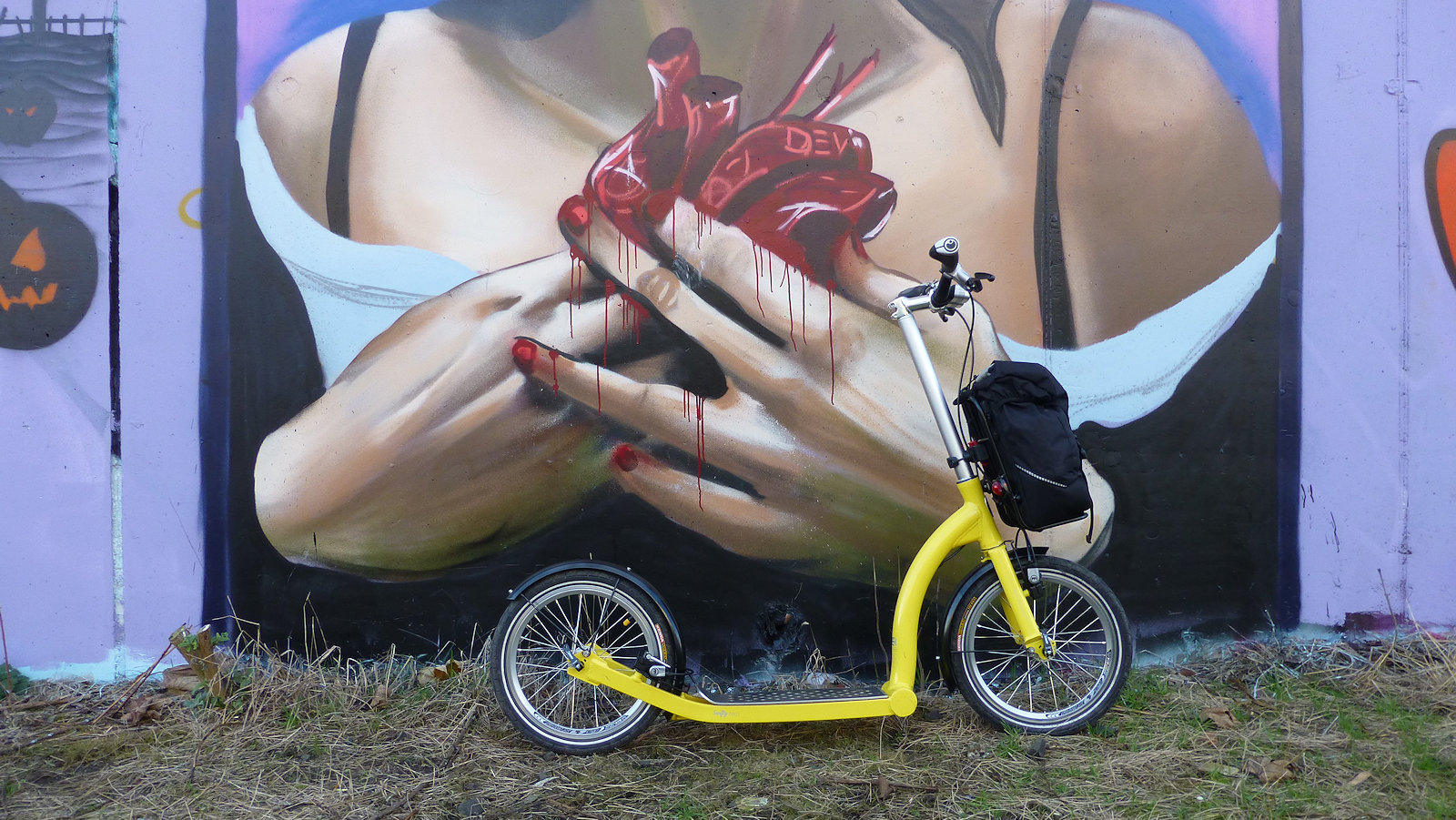Tyre pressures are an important aspect of kick scooting and on this page I want to share a few thoughts on the topic. So, why are tyre pressures important? They are important because they have an effect or both you and your scooter.
Low pressures mean more effort is required to scoot along. Low pressures also increases the risk of punctures either from object penetration or in extreme cases the inner tube pinching between tyre and rim. Low pressures also affect handling, possibly making cornering less stable and may even increases the possibility of a fall.
Higher pressures have pretty much the opposite effect. Inflating tyres to the correct pressure makes for less rolling resistance and therefore a faster scoot. In effect you get more distance for each leg kick. Correct pressures also decrease the risk of punctures and offer better stability when cornering.
Of course, there are times when less than correct pressures are a benefit. For example, when scooting off-road on rough surfaces, a slightly lower tyre pressure will be more comfortable, the tyre acting like suspension and absorbing some of the bumps and lumps in the surface. Lower pressures also increase the contact area that the tyre has with the ground, often a benefit off-road.
It is worth noting that tyres usually have markings on the side wall indicting the range of pressures the tyre is designed to cater for. For example, the Schwalbe Big Apple 16″ x 2.00″ tyres on my Swifty Air have a range between 30 and 70 PSI (pounds per square inch), the 30 PSI representing the minimum the tyre should be inflated to, with 70 PSI being the maximum. As I mostly use the Swifty Air off-road, I tend to go with around 60 PSI as a good compromise between rolling resistance and comfort.
With my other scooter, a Swifty Air, which was originally supplied with, and is still shod with, a pair of Kenda Kwest 16″ x 1.50″ tyres, I run them at 90 PSI, the maximum being 100 PSI. The Swifty Zero is my on-road scooter and generally sticks to smooth tarmac surfaces and therefore faster speeds.
There’s an interestng test you can try to see the effect of lower and higher tyres pressures. Look at the pressure range on the side of the your tyre and set the pressure to the minimum. Then find a flat stretch of ground, mark where you start off and measure how far to get on a side kick. Then inflate the tyres to maximum and repeat. Note the difference. Try to kick with the same amount of effort each time.
Finally, I would recommend getting hold of a good quality tyre pressure guage, either mechanical or digital, rather than relying of the guage on your pump, if it has one, or the old and inaccurate trick of squeezing the tyre between your fingers. And remember, your tyre pressures will drop over time, particularly higher pressures around 100 psi, which can drop by 10 psi in a week, less so with lower pressures. So, always check tyre pressures before each ride.
Copyright ©2020 Gary Buckham. All rights reserved.


